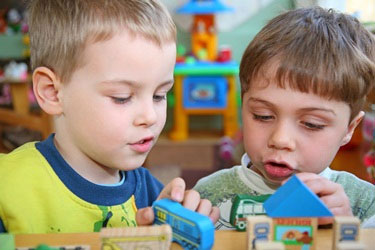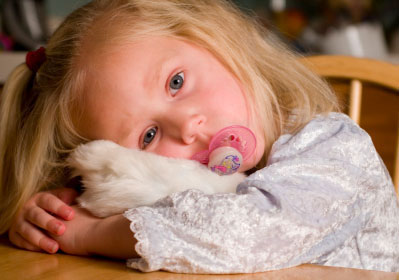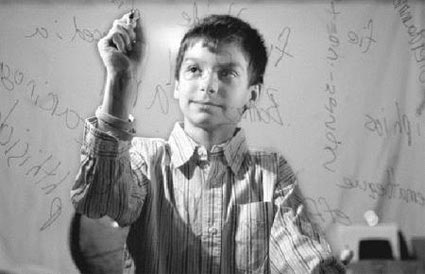Kanners Autism in children is a developmental disorder. It can be identified early with some clear indications. Understanding Kanners autism and knowing about the symptoms of Kanners autism helps in coping with the disease. To know more, read on. Kanners Autism has got its name from Dr. Leo Kanner, an Austrian psychiatrist, who identified it in 1943. Often this term is used generally to describe all kinds of the autism spectrum disorders. However, Kanner’s is a distinct developmental disorder that is characterised by low social and communicative function and the presence of repetitive behaviours. This disorder statistically affects 10-30 children per 10,000 babies born. Its symptoms start appearing before the age of 3, and its effects last throughout the patients lifetime. Some of the early symptoms of this type of autism are delayed onset of speech and lack of interest in activities of peers. Similar to other Autism spectrum disorders, sufferers of this disorder have triads of impairment. They have issues related to social imagination, communication and interaction In this articleSocial Interaction Communication Apathy to Activity Withdrawn Obsessions Routine Behavioural Issues Symptoms of Kanner’s Syndrome Following is a detailed description of symptoms of this disorder: 1. Social Interaction - Children suffering from Kanner’s will have no interest in sharing their own joys or sorrows. They normally have difficulties in making friends with their peers. Such children are poor in non verbal communication. In fact they avoid eye contact and have difficulties in interpreting facial expressions and posture. They do not have the ability to empathise with others or understand their emotions. 2. Communication - Kanner’s autism may result in issues relating to both verbal as well as non-verbal communication. In such children development of speech is significantly affected. Even those children who are able to talk may have problems in starting a conversation or keep a discussion going. Some may use repetitive language. Repetition of words or phrases which are inappropriate during a conversation is also common in such children. 3. Apathy to Activity - Children with Kanner’s will normally never engage or play activities like normal children of their age. Such children may have fascination for one of the components of a toy instead of a whole. For example instead of playing with an entire building block they may choose to play with one single block all the time. 4. Withdrawn - Children suffering from this disorder are normally withdrawn and unwilling to respond to those around them. In fact most will appear to be detached from their families. 5. Obsessions - Such children will take special liking to and get obsessed with a particular subject or object. 6. Routine - Kanner’s autism sufferers prefer sticking to a routine all the time and resist change of any kind. 7. Behavioural Issues - Problems like throwing tantrums and getting angry easily are common in children suffering from this disorder. There are several indications or signs of Kanner’s autism early on in a child’s life. If identified early a lot of help can be sought to help the patient in all possible ways. For example, lack of speech or delayed speech which is a common symptom of this disorder must immediately alert the parents. Another thing which is a clear indication of Kanner’s autism in children is repetitive movements of body parts. Whether the part of the body is the head, feet or arms repetitive and same movement is a clear indication of Kanner’s autism. Understanding the background as well as the signs of autism is very essential to help such patients cope with this disorder later on in life. Kanner’s currently affects a large portion of the world population. It is something which must be understood by parents and caregivers early on. Early identification followed up with different types of therapies to treat the condition will be of great help to the patients who have to put up with the symptoms of this disorder all their life.
Kanner's Autism in children is a developmental disorder. It can be identified early with some clear indications. Understanding Kanner's autism and knowing about the symptoms of Kanner's autism helps in coping with the disease. To know more, read on. Kanner's
Autism has got its name from Dr. Leo Kanner, an Austrian psychiatrist, who identified it in 1943. Often this term is used generally to describe all kinds of the autism spectrum disorders. However, Kanner’s is a distinct
developmental disorder that is characterised by low social and communicative function and the presence of repetitive behaviours.
This disorder statistically affects 10-30 children per 10,000 babies born. Its symptoms start appearing before the age of 3, and its effects last throughout the patient's lifetime. Some of the early symptoms of this type of autism are delayed onset of speech and lack of interest in activities of peers. Similar to other Autism spectrum disorders, sufferers of this disorder have triads of impairment. They have issues related to social imagination, communication and interaction
Symptoms of Kanner’s Syndrome
Following is a detailed description of symptoms of this disorder:
1. Social Interaction -
Children suffering from Kanner’s will have no interest in sharing their own joys or sorrows. They normally have difficulties in making friends with their peers. Such children are poor in non verbal communication. In fact they avoid eye contact and have difficulties in interpreting facial expressions and
posture. They do not have the ability to empathise with others or understand their emotions.
2. Communication -
Kanner’s autism may result in issues relating to both verbal as well as non-verbal communication. In such children development of speech is significantly affected. Even those children who are able to talk may have problems in starting a conversation or keep a discussion going. Some may use repetitive language. Repetition of words or phrases which are inappropriate during a conversation is also common in such children.
3. Apathy to Activity -
Children with Kanner’s will normally never engage or play activities like normal children of their age. Such children may have fascination for one of the components of a toy instead of a whole. For example instead of playing with an entire building block they may choose to play with one single block all the time.
4. Withdrawn -
Children suffering from this disorder are normally withdrawn and unwilling to respond to those around them. In fact most will appear to be detached from their families.
5. Obsessions -
Such children will take special liking to and get obsessed with a particular subject or object.
6. Routine -
Kanner’s autism sufferers prefer sticking to a routine all the time and resist change of any kind.
7. Behavioural Issues -
Problems like throwing tantrums and getting angry easily are common in children suffering from this disorder.
There are several indications or signs of Kanner’s autism early on in a child’s life. If identified early a lot of help can be sought to help the patient in all possible ways. For example, lack of speech or delayed speech which is a common symptom of this disorder must immediately alert the parents. Another thing which is a clear indication of Kanner’s autism in children is repetitive movements of body parts. Whether the part of the body is the head, feet or arms repetitive and same movement is a clear indication of Kanner’s autism.
Understanding the background as well as the signs of autism is very essential to help such patients cope with this disorder later on in life. Kanner’s currently affects a large portion of the world population. It is something which must be understood by parents and caregivers early on. Early identification followed up with different types of therapies to treat the condition will be of great help to the patients who have to put up with the symptoms of this disorder all their life.































